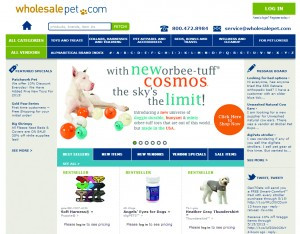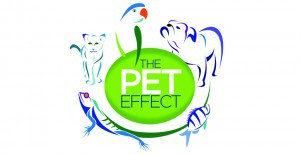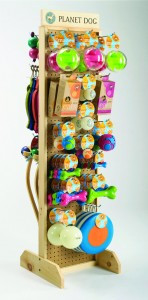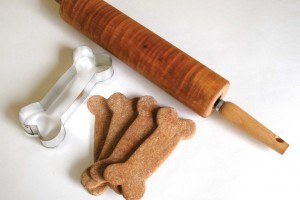Just as technology becomes more prevalent in our everyday lives, it is starting to become more important in our pets lives as well.
PetSafe, has been a leader in the area of pet technology. Started in 1991 by Randy Boyd, the company was the first to come out with wireless fencing and since then has introduced numerous products that better a pet and pet owner’s life by using technology. Some of those products help control barking and assist with training.
It all started when Boyd was selling cattle fencing and his customers were asking about fence products for pets. At the time it was professionally done and people wanted a do-it-yourself version. When the patent came off the original electric fence, he learned how to make one on his own and then sold the do-it-yourself version to people.
“We have two ways of introducing new products, either taking existing products and making them better or invent technology to help the pet ownership experience,” Jason Hart, director of marketing of PetSafe, said. “We have over 300 patents. Some are products we built ourselves or from acquiring patens.”
The company is constantly using new technologies to better their products, including their wireless fencing system.
“At Global we debuted the wireless mapping fence,” Hart said. “Before, people who did wireless fencing did it by making a giant circle on the yard, which is great, but no one’s yard is a circle. Now with our product you can map out exactly where you want your invisible fence to be.”
They are always looking to make products that take the latest trends in tech and incorporate them into an owner’s life. One way they are doing that is through their selective entry for their dog doors.
“Using your computer you can select when a dog or other pet can go in and out of your house,” Hart said. “Soon, you will be able to do it through your Smartphone with an app. We are always looking at what technology is doing and how it’s evolving in the mainstream. Now-a-days it’s Smartphones, years ago it was Bluetooth. We see what’s out there and try to bring it in the pet world.”
Hart believes the pet industry as a whole is behind other industries as far as technology, but that’s not necessarily a bad thing, he said.
“At the end of the day, you are making products for the pet and how it helps them,” Hart said. “A lot of technology out there helps people but that’s not what we are doing, we are there for the pets. My dog will still be happy with a good old stick in the yard. What you will see with technology in the pet industry is technology that helps in convenience. More apps to feed your dog, interact with your dog, things to improve the pet ownership experience.”
Fun Activities
Gordon Spater, principal of Kurgo, has seen that a lot of people were trying to take pictures from their dog’s perspective.
“We know how to make harnesses and we knew our Tru-Fit Smart Harness was sturdy enough to hold a camera so we decided to make it so you can equip a GoPro to it,” Spater said. “When you buy the GoPro they offer a grab-bag of different mounts. We have the attachment on our harness for one of the mounts that GoPro makes.”
Spater loves the product because it incorporates the idea of pets and pet owners setting off to see the world together and having fun.
“I think that what’s neat about this is, our company is all about getting people and their dogs out there and enjoying the outside and using technology to enhance the animal-human bond,” Spater said. “People are interested in it for fun trips just down to the ocean or lake. Also, a lot of people use it for hunting when a dog goes to look for the bird. It’s just exciting to see a product really help with the bond between pets and pet owners.”
Besides making products for adventures, Kurgo also uses technology to keep pets safe.
“We have a vest that’s made of nylon that features reflective piping around the outside of it and in the back is a pocket where it comes with a blinking LED light,” Spater said. “You can turn it on when you go for a run; it blinks or stays solid to help protect dogs and their owners.”
Spater had the idea when he was getting ready to go for a run with his dog.
“The jacket is a windbreaker type of jacket,” Spater said. “It’s a pretty simple idea but no one else really has it. I run in the morning with my dog and I spent a lot of time in the morning clipping different things onto my dog for safety. This was easier because it was just one thing to clip on.”
Protecting Animals
In 2009 Tom Arnold wanted to figure out a way to use technology to help improve an animal’s life. It then grew into becoming a protection service for animals and started Pet Hub.
Pet Hub is a tag that is put on a pet’s collar that has a QR code with all the information someone would need if the pet is found.
“Last summer we launched a key part of our service, the found pet hotline,” Lorien Clemens, manager of marketing and outreach at Pet Hub, said. “All of our tags have a toll-free hotline and a call center that is 24/7 and it will email the owner of the pet immediately when their pet’s tag is scanned.”
Recently, Pet Hub started incorporating NFC, near field communications, technology to their pet tags.
“Using NFC it allows people to tap the tag and it instantly goes to the pet’s profile,” Clemens said. “It just makes it so much easier to get the pet information since you won’t have to try to scan the tag. A lot of Smartphones, such as the Samsung Galaxy S3 and S4, have the NFC readers in them already.”
Pet Hub is also currently working with another pet company to do a real-time GPS system.
Tagg – the Pet Tracker describes themselves as a cell phone for your pet.
“It’s a very smart phone for your pet,” Dudley Fetzer, senior director of sales and marketing at Snaptracs, the developer of Tagg – the Pet Tracker, said. “When your pet leaves home and it’s not known by anyone, the phone calls home and it lets you know when the dog has left and asks you if you want to track your dog.”
The tracker is designed to be worn on an existing collar and the pet owner sets up a perimeter around their house where they want the pet to stay. If the pet leaves the area, the owner can be alerted by their Smartphone, or from a web app.
“I like to receive emails, but my wife likes getting SMS text messages,” Fetzer said. “We could also set it up so that our neighbors or children get the message, just in case we are not home.”
Besides using the product to help locate a lost pet, Tagg also is helping to fight the battle against obesity.
“With Tagg, it allows you to track your pet’s activity levels to help fight obesity,” Fetzer said. “It’s a nice way to monitor their activity levels over a period of time. It allows you to make changes to their diet or exercise pattern if need be.
The combination of pets and technology can be a good source of revenue for pet store owners.
“With technology I think there is a real opportunity there,” he said. “People spend a lot of time and money and have strong feelings for their pet. Retail stores need to stay on top of what customers need.”
Bright Lights
Advancements in technology are not just reserved for those animals with four legs. For fish tanks, LED lighting is quickly becoming a popular option.
LED Moonlight’s by Lunar Lighting, debuted around 10 years ago and it’s the time Aquatic Life said that LEDs were being used in the aquarium hobby. Then after moonlights, they saw them used in Betta bowls and nano aquariums before coming more popular and in larger aquaria.
LED lighting uses power more efficiently compared to standard lighting.
“Since most traditional lights product light in a 360 degree output, you need a reflector to redirect the back 180 degree to the location needing the light,” Michael Elliot, of Aquatic Life, said. “LED typically product light in a 110-140 degree angle, thus not requiring an inefficient reflector to redirect the back portion of light as in the traditional lighting.”
Why go with LED lighting? LED’s target the light better into the area to be lit, thus a very energy efficient light.
“Single LEDs are not as broad a spectrum of light as fluorescent lamps, so combinations of different color LEDs are needed,” Elliot said. “Because of the need to use different color LEDs, there is a potential problem of color branding. Thus it is important to use the correct combination of LEDs and diffusers to better mix the LED light.”









